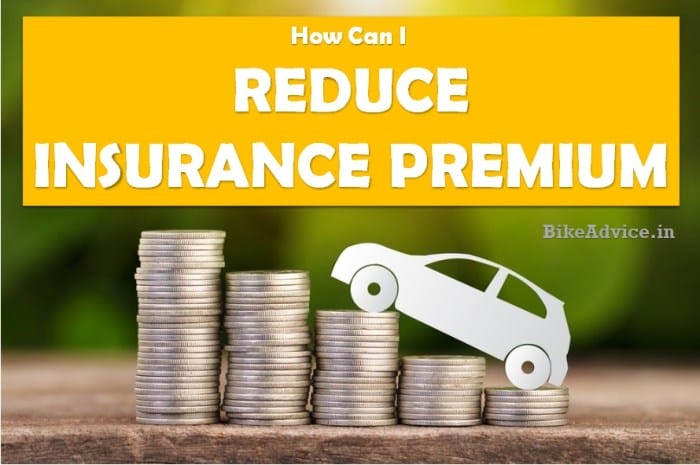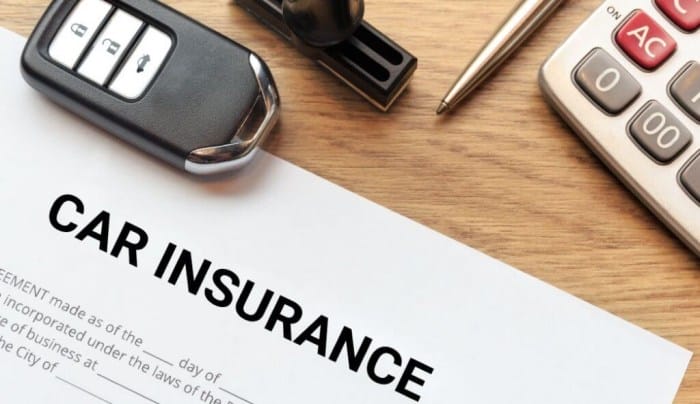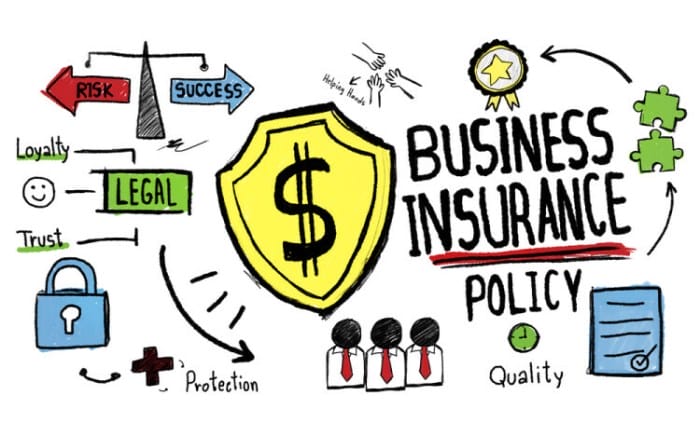Insurance is a crucial aspect of financial planning, providing protection against unexpected events. However, insurance premiums can be a significant expense, especially if not managed effectively. This guide delves into practical tips to help you lower your insurance costs without compromising coverage.
From comparing quotes and adjusting deductibles to taking advantage of discounts and utilizing technology, this comprehensive guide covers various strategies to reduce your insurance premiums. Whether you’re looking to save on auto, home, or any other type of insurance, these tips will empower you to make informed decisions and potentially lower your insurance expenses.
Research and Compare Quotes

When seeking lower insurance premiums, exploring various insurance providers and comparing their quotes is a wise step. This practice, known as comparison shopping, enables you to identify the most competitive rates while ensuring the coverage aligns with your specific needs.explanatory
paragraphBy comparing quotes, you gain a comprehensive understanding of the available options, allowing you to make informed decisions. It’s essential to consider not only the premium amount but also the coverage levels, deductibles, and potential discounts offered by each provider.
This holistic approach ensures you secure a policy that offers adequate protection at a reasonable cost.
Factors to Consider
- Coverage Levels: Evaluate the extent of coverage provided by each policy. Ensure it meets your specific requirements, including liability limits, property coverage, and any additional riders you may need.
- Deductibles: Pay attention to the deductible amounts associated with each policy. A higher deductible typically leads to lower premiums, but it also means you’ll pay more out of pocket in the event of a claim.
- Discounts: Inquire about potential discounts available, such as those for bundling policies, maintaining a clean driving record, or installing safety features in your vehicle or home. These discounts can significantly reduce your insurance costs.
Adjust Deductible Amounts
One way to potentially lower your insurance premiums is to adjust your deductible amounts. A deductible is the amount you pay out of pocket before your insurance coverage kicks in. By opting for a higher deductible, you agree to pay more upfront in the event of a claim, but in return, you may be rewarded with lower insurance premiums.
Examples of Deductible Amounts and Their Impact on Premiums
The relationship between deductible amounts and insurance premiums can be illustrated using a table:
| Deductible Amount | Potential Premium Savings |
|---|---|
| $500 | 10-15% |
| $1,000 | 15-20% |
| $2,000 | 20-25% |
It’s important to note that the actual amount of savings you may experience can vary depending on factors such as your insurance company, your driving record, and the type of coverage you have.
Take Advantage of Discounts

Insurance companies offer various discounts to policyholders, allowing them to save money on their premiums. By taking advantage of these discounts, individuals can significantly reduce their insurance costs.
Discounts may vary among insurance companies and policies, but some common options include:
Bundling Policies
- Bundling Policies: By combining multiple insurance policies, such as auto and home insurance, with the same company, policyholders can often receive a discount.
- Maintaining a Good Driving Record: Maintaining a clean driving record, free of accidents and violations, can result in lower insurance premiums.
- Installing Safety Features: Installing safety features like anti-theft devices, airbags, and anti-lock brakes can make vehicles safer and may lead to lower insurance costs.
- Defensive Driving Courses: Taking defensive driving courses can demonstrate responsible driving habits and may qualify policyholders for discounts.
- Loyalty Discounts: Some insurance companies offer loyalty discounts to policyholders who maintain their coverage with the company for a certain period.
- Good Student Discounts: Students with good academic records may be eligible for discounts on their auto insurance premiums.
- Senior Discounts: Insurance companies may offer discounts to senior drivers who meet certain age and driving experience criteria.
These discounts can add up to significant savings on insurance costs. For example, bundling home and auto insurance policies can save policyholders up to 15% on their premiums. Maintaining a good driving record can lead to discounts of up to 20% or more.
Installing safety features can reduce premiums by up to 10%. By taking advantage of these and other available discounts, policyholders can save a substantial amount of money on their insurance premiums.
Consider Usage-Based Insurance
Usage-based insurance (UBI), also known as pay-as-you-drive insurance, offers a potential solution for drivers looking to lower their insurance premiums. UBI programs reward low-mileage drivers with lower rates based on their actual driving habits.
UBI programs typically involve the installation of a telematics device in your vehicle. This device collects data on your driving behavior, such as mileage, speed, braking, and acceleration. The data is then used to calculate your insurance premium, with safer drivers paying less.
How UBI Programs Work
- Enroll in a UBI Program: Contact your insurance provider to inquire about their UBI program and eligibility requirements.
- Install the Telematics Device: Once enrolled, you will receive a telematics device to install in your vehicle. The device typically connects to your car’s diagnostic port and collects data while you drive.
- Monitor Your Driving Behavior: The telematics device tracks your driving habits, including the time of day you drive, the distance you travel, and your speed and braking patterns.
- Receive Feedback and Rewards: Some UBI programs provide real-time feedback on your driving behavior through an app or online portal. Based on your driving habits, you may earn rewards or discounts on your insurance premium.
Maintaining a Good Driving Record

Maintaining a clean driving record is a crucial factor in determining insurance rates. A history of accidents, traffic violations, or DUIs can lead to higher premiums, while a record free of incidents can result in lower rates.
Positive Correlation
- Safer Drivers: Insurance companies view drivers with clean records as less risky, making them eligible for lower rates.
- Fewer Claims: A lack of accidents and violations reduces the likelihood of filing claims, which is reflected in lower premiums.
- Responsibility: A good driving record demonstrates responsibility and adherence to traffic laws, indicating a lower risk of future incidents.
Maintaining a Good Driving Record
- Obey Traffic Laws: Comply with speed limits, stop signs, and other regulations to avoid violations and accidents.
- Defensive Driving: Consider taking defensive driving courses to learn safe driving techniques and strategies to prevent accidents.
- Avoid Distractions: Minimize distractions while driving, such as using a cell phone or eating, to maintain focus on the road.
- Regular Vehicle Maintenance: Keep your vehicle in good condition with regular maintenance to reduce the risk of breakdowns or accidents.
Review Coverage Levels
Regularly reviewing insurance coverage levels is crucial to ensure they align with your evolving needs and budget. Evaluating coverage limits and optional add-ons helps you maintain adequate protection while optimizing your insurance costs.
To assess your coverage needs, consider the following factors:
- Changes in your assets, such as buying a new car or home, or acquiring valuable possessions.
- Life stage changes, like getting married, having children, or retiring, may impact your insurance requirements.
- Adjustments in driving habits, such as reduced mileage or switching to a safer vehicle, can influence your auto insurance needs.
Once you have assessed your coverage needs, you can make informed adjustments to lower your premiums while maintaining adequate protection:
Adjust Coverage Limits
- Review liability limits to ensure they meet state minimums and provide sufficient protection. Consider increasing limits if you have substantial assets.
- Evaluate comprehensive and collision coverage for older vehicles. Dropping these coverages may be cost-effective if the repair or replacement value is lower than the premiums.
- Consider reducing optional coverages, such as rental car reimbursement or roadside assistance, if you rarely use them or have alternative arrangements.
Bundle Policies
- Bundling your home, auto, and other insurance policies with the same provider can often lead to discounted rates.
- Compare quotes from different insurers to ensure you’re getting the best deal on bundled coverage.
Increase Deductibles
- Raising your deductible can significantly lower your premiums. However, ensure you choose a deductible that you can comfortably afford in case of a claim.
- Consider increasing deductibles for comprehensive and collision coverage, where claims are less frequent.
Utilize Telematics Devices

Telematics devices are innovative tools that can provide valuable insights into driving behavior, potentially leading to lower insurance premiums. These devices monitor various aspects of driving, such as speed, acceleration, braking, and location. The collected data is analyzed to assess driving habits and risk levels, which can influence insurance costs.
Benefits of Telematics Programs
- Personalized Premiums: Telematics programs allow insurers to tailor premiums based on individual driving behavior. Safe and responsible drivers may qualify for lower rates, while those engaging in risky behaviors may face higher premiums.
- Encouraging Safer Driving: The real-time feedback provided by telematics devices can encourage drivers to adopt safer driving habits. By monitoring their driving behavior, individuals can identify areas for improvement and make conscious efforts to reduce risky behaviors.
- Identifying High-Risk Drivers: Telematics data can help insurers identify high-risk drivers who pose a greater risk of accidents. This information can be used to adjust premiums accordingly, ensuring that insurance costs are fairly distributed among policyholders.
Limitations of Telematics Programs
- Privacy Concerns: Some individuals may be hesitant to use telematics devices due to privacy concerns. They may worry that their driving data could be misused or shared with third parties without their consent.
- Device Costs: Telematics devices can come with an additional cost, which may be a deterrent for some drivers. However, many insurance companies offer discounts or incentives to offset the cost of the device.
- Accuracy and Reliability: The accuracy and reliability of telematics data can vary depending on the device and its installation. Poor-quality data or technical glitches can lead to inaccurate assessments of driving behavior.
Examples of Telematics Programs
- Progressive Snapshot: Progressive Snapshot is a popular telematics program that monitors driving behavior through a small device plugged into the vehicle’s diagnostic port. The program provides feedback and discounts based on driving habits.
- Allstate Drivewise: Allstate Drivewise is another well-known telematics program that uses a smartphone app to track driving behavior. The program offers personalized feedback and potential discounts for safe driving.
- State Farm Drive Safe & Save: State Farm Drive Safe & Save is a telematics program that utilizes a mobile app to monitor driving behavior. Drivers can earn discounts based on their driving habits and receive personalized feedback.
Consider Group Insurance

Group insurance offers lower premiums for individuals who qualify by pooling together members of a group to share the risks and costs of insurance coverage. This can be an excellent way to save money on insurance premiums while still getting the coverage you need.
Common Group Insurance Plans
There are many different types of group insurance plans available, but some of the most common include:
- Employer-Sponsored Plans: Many employers offer group insurance plans as a benefit to their employees. These plans typically cover health insurance, dental insurance, and vision insurance.
- Professional Organization Plans: Professional organizations often offer group insurance plans to their members. These plans typically cover professional liability insurance, errors and omissions insurance, and business interruption insurance.
- Association Plans: Associations, such as alumni associations or credit unions, may offer group insurance plans to their members. These plans can cover a wide range of insurance needs, including health insurance, life insurance, and auto insurance.
Seek Professional Advice

Consulting an insurance agent or broker can be highly beneficial in navigating the complex world of insurance and securing cost-effective coverage options. These professionals possess specialized knowledge and expertise in insurance matters, enabling them to provide tailored advice and assist in negotiating lower premiums.
Benefits of Consulting an Insurance Professional
- Personalized Advice: Insurance professionals conduct a thorough analysis of individual insurance needs, considering factors such as lifestyle, driving habits, and property characteristics. Based on this assessment, they recommend suitable coverage options and ensure that clients are adequately protected against potential risks.
- Expertise in Insurance Products: Insurance professionals stay updated on the latest insurance products and market trends. They can explain the intricacies of various policies, compare different options, and help clients select the coverage that best aligns with their specific requirements and budget.
- Negotiation Skills: Insurance professionals often have established relationships with insurance companies and can negotiate favorable terms and lower premiums on behalf of their clients. They possess the knowledge and experience to present a compelling case for lower rates, resulting in potential cost savings.
Bundle Policies

Bundling insurance policies is a smart way to save money on your overall insurance premiums. By combining multiple policies with the same insurer, you can take advantage of discounts and streamlined billing.
Some common policies that can be bundled include:
- Auto and home insurance
- Renters and car insurance
- Life and health insurance
- Business and personal insurance
The potential savings from bundling policies can vary depending on the insurer and the specific policies being bundled, but it’s not uncommon to save 5-15% or more on your total premiums.
Bundling Auto and Home Insurance
Bundling auto and home insurance is a popular option for many homeowners. This can provide several benefits, including:
- Convenience: Having all your insurance policies with one company makes it easier to manage your coverage and pay your bills.
- Savings: Many insurers offer discounts for bundling auto and home insurance. The exact amount of the discount will vary depending on the insurer and the specific policies being bundled, but it’s not uncommon to save 5-15% or more on your total premiums.
- Enhanced Coverage: Some insurers offer enhanced coverage options when you bundle your auto and home insurance policies. For example, you may be able to get a higher liability limit or a lower deductible.
Closure

In conclusion, lowering your insurance premiums is achievable by implementing a combination of strategies. By researching and comparing quotes, adjusting deductibles, taking advantage of discounts, considering usage-based insurance, maintaining a good driving record, reviewing coverage levels, utilizing telematics devices, considering group insurance, seeking professional advice, and bundling policies, you can effectively reduce your insurance costs while maintaining adequate protection.
Remember, it’s essential to assess your individual needs and circumstances to determine the most suitable strategies for your situation.
FAQ Section
What is the significance of comparing insurance quotes?
Comparing quotes from multiple insurance providers allows you to identify the most competitive rates and coverage options. It enables you to make informed decisions and potentially save money on your insurance premiums.
How does opting for a higher deductible impact my insurance premiums?
Choosing a higher deductible generally results in lower insurance premiums. This is because you agree to pay a larger portion of the repair or replacement costs in the event of a claim, reducing the insurance company’s risk.
What are some common discounts offered by insurance companies?
Insurance companies offer various discounts to incentivize safe driving, loyalty, and bundling of policies. Common discounts include multi-policy discounts, good driving discounts, accident-free discounts, and safety feature discounts.
How does usage-based insurance (UBI) work?
UBI programs typically use telematics devices to track driving behavior, such as mileage, speed, and braking habits. Drivers who demonstrate safe driving habits may be eligible for lower premiums under UBI programs.
What are the benefits of consulting an insurance agent or broker?
Insurance professionals can provide personalized advice, analyze your insurance needs, and help you find the most cost-effective coverage options. They can also assist in negotiating lower premiums on your behalf.



